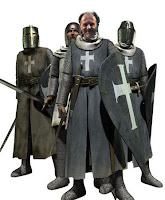Since homosexuality doesn’t result in the perpetuation of the species the much reiterated argument states it as unnatural. But, if by ‘unnatural’ they mean ‘not occurring in nature’, then I’m afraid they have been seriously misinformed. The animal world is absolutely teeming with homosexual, bisexual and transgendered creatures! Indeed, more than 450 species from all major animal groups have been reported to engage in same-sex activities, and the literature is positively filled with scandalous anecdotes. I couldn’t help but wonder, does the full-blown existence of same-sex attraction in nature imply that homosexuality is ‘natural’, and if so, what is its evolutionary significance?
Maybe the queerest of all is the hippies’ ‘make love not war’ primate, the bonobo. These dudes have no sexual inhibitions whatsoever. Aside from casual hetero sex, there is a startling degree of homo- hanky-panky and other non-reproductive sexual goings-on in the bonobo community. For example, females frequently stimulate each others’ clitorises in an act called GG- rubbing (often reaching orgasm judging by their huge ‘grins’ and the uttering of squeals), and the males leisurely indulge in activities such as penis- fencing (rubbing erect penises together as if crossing swords), rump-rumping (scrotal rubbing), and old fashioned anal penetration, hand- jobs and blow-jobs.
Admittedly, most animals are bisexual, but some individuals appear to be exclusively gay, such as the two inseparable Central Park Zoo penguins Roy and Silo, who adamantly refuse female companionship. This, however, creates an evolutionary paradox; exclusive same-sex interaction does not result in procreation, so why does it exist?
Most scientists approach this paradox by trying to pinpoint straightforward biological causes for homosexuality, such as abnormal levels of sex hormones in those brain areas responsible for sexual behaviour. However, these theories share the homophobic attitude that animal, and by extension human, same-sex attraction is in some way an ‘aberrant’ phenomenon that requires an ‘explanation’. But as John Boswell has remarked; ‘What ‘causes’ homosexuality is an issue of importance only to societies which regard gay people as bizarre or anomalous’. In many indigenous cultures homosexuality is freely expressed and is often part of a boy’s puberty rites to gain masculine strength. Dr Bruce Bagemihl, author of Biological Exuberance, argues further that the existence of homosexuality is its function; it is ‘intrinsically valuable’ because it adds to the biological diversity of nature, and the more diverse a biological system, the more vital and stable it is.
By definition there is no unnaturalness in nature, so same-sex attraction must have some Darwinian ‘value’. Maybe we are so blinded by Victorian prejudices and religious hush-hush that we find it hard to accept the queerness of nature and as a result fail to see its true evolutionary significance, whatever it might be. As J.B.S Haldane said; ‘The world is not only queerer than we suppose, it is queerer than we can suppose’.
Christina Geijer
 The UN Environment Programme (UNEP) Mediterranean Action Plan (MAP) and its Regional Activity Centres have released the first State of the Environment and Development report covering the Mediterranean region, which tackles key environmental issues, including climate change. The “State of the Environment and Development in the Mediterranean 2009″ was released during the 16th Meeting of the Contracting Parties to the Barcelona Convention, which took place from 3-5 November 2009, in Marrakech, Morocco.
The UN Environment Programme (UNEP) Mediterranean Action Plan (MAP) and its Regional Activity Centres have released the first State of the Environment and Development report covering the Mediterranean region, which tackles key environmental issues, including climate change. The “State of the Environment and Development in the Mediterranean 2009″ was released during the 16th Meeting of the Contracting Parties to the Barcelona Convention, which took place from 3-5 November 2009, in Marrakech, Morocco. 
















